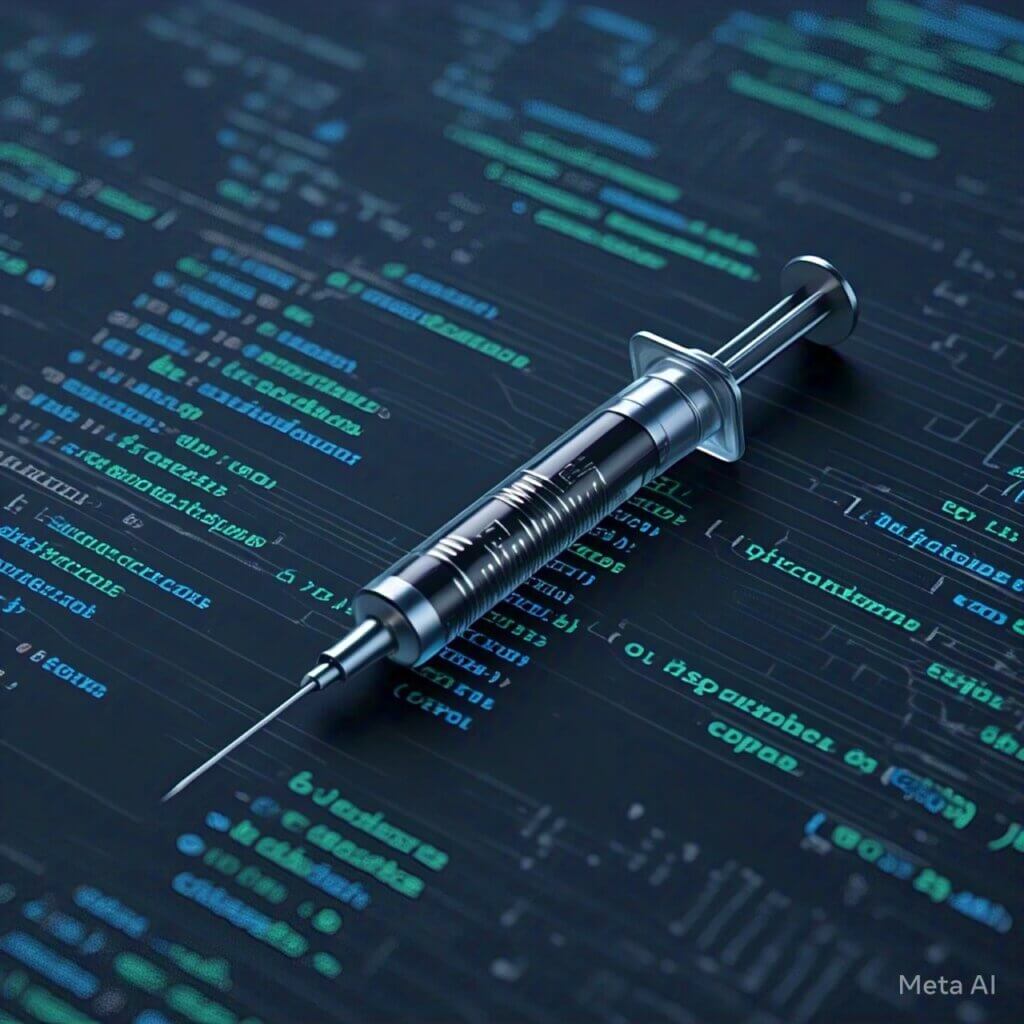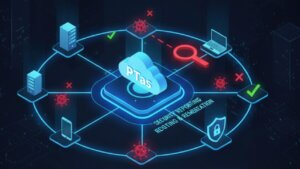Reflective DLL Injection is one of those topics that caught my interest while digging through different malware behaviors in Windows environments. It’s not just a theoretical concept—it’s actively used by red teamers and malicious actors alike to stealthily load code into memory without touching disk. What intrigued me most is its elegance: bypassing traditional loading mechanisms, dodging antivirus software, and leaving minimal forensic traces.
In this blog, I’ll break down what Reflective DLL Injection is, how it works under the hood, and walk through how I implemented and detected it in a Windows lab environment. I’ll also touch on platform-specific considerations, detection strategies, and relevant code samples.
Table of Contents
What Is Reflective DLL Injection?

Reflective DLL Injection is a technique used to inject a Dynamic Link Library (DLL) into the address space of a process and execute it without relying on Windows APIs like LoadLibrary. Instead, the DLL is loaded and executed entirely from memory. This is commonly used by advanced persistent threats (APTs), red team tools like Cobalt Strike, and some sophisticated malware strains.
The core idea is simple: you write a loader (called a reflective loader) inside the DLL itself that maps the DLL into memory, resolves imports, applies relocations, and jumps to the entry point. You then inject this DLL as a byte array into the remote process and call the reflective loader.
Key Steps in Reflective DLL Injection
Compile a DLL that includes a reflective loader.
Read the DLL as a byte array in the injector process.
Allocate memory in the target process.
Write the DLL into the target process’s memory.
Create a remote thread pointing to the reflective loader’s address.
How I Implemented Reflective DLL Injection
I began with a simple DLL that I wanted to inject. This DLL includes the reflective loader, which is a custom entry point responsible for loading the DLL manually.
Reflective DLL Sample (Simplified)
Here’s a simplified outline of the ReflectiveLoader function inside the DLL:
DWORD WINAPI ReflectiveLoader(void* lpParameter) {
// Parse the PE headers
// Allocate memory for the new image
// Copy sections into new memory
// Resolve imports manually
// Handle relocations
// Call DllMain
return 0;
}
In a real-world scenario, I used Stephen Fewer’s open-source reflective loader from the Metasploit framework and tailored it to my needs.
Injector Code (C++)
This is the injector application I used to inject the DLL into a remote process:
void InjectDLL(HANDLE hProcess, LPVOID dllBuffer, DWORD dllLength) {
LPVOID remoteMemory = VirtualAllocEx(hProcess, NULL, dllLength, MEM_COMMIT, PAGE_EXECUTE_READWRITE);
WriteProcessMemory(hProcess, remoteMemory, dllBuffer, dllLength, NULL);
// Calculate offset to ReflectiveLoader
DWORD offset = GetReflectiveLoaderOffset(dllBuffer);
LPTHREAD_START_ROUTINE pThreadStart = (LPTHREAD_START_ROUTINE)((LPBYTE)remoteMemory + offset);
HANDLE hThread = CreateRemoteThread(hProcess, NULL, 0, pThreadStart, remoteMemory, 0, NULL);
WaitForSingleObject(hThread, INFINITE);
}
This code reads a DLL file into memory, writes it into the target process, and launches a thread at the reflective loader’s entry point.
Why Reflective DLL Injection Works So Well
Traditional DLL injection leaves traces: the DLL shows up in memory-mapped files, the import table is populated, and it may appear in API hooks. Reflective DLL injection avoids all this because it doesn’t use LoadLibrary, doesn’t touch disk, and doesn’t register with standard Windows APIs.
The injected code only lives in memory and the process’s Import Address Table (IAT) never knows it exists. It’s stealthy by design.
Platform-Specific Detection: Windows
To detect Reflective DLL Injection on Windows, I had to step away from API-based monitoring and instead dig directly into process memory. Here’s how I approached it:
1. Scanning Memory for Unbacked PE Files
I used PE-sieve to scan the memory of suspect processes. PE-sieve can detect PE files that are loaded in memory but don’t exist on disk.
pe-sieve64.exe /pid 1234 /mem_scan /dir output
This quickly helped me identify manually mapped DLLs that shouldn’t have been there. Reflective DLLs stand out because they lack file path references.
2. YARA Rule for PE Headers in Memory
Here’s a sample YARA rule I wrote to find PE headers in memory:
rule SuspiciousReflectivePE
{
strings:
$mz = { 4D 5A } // MZ Header
$pe = { 50 45 00 00 } // PE00 Header
condition:
$mz at 0 and $pe in (0..512)
}
Running this against memory dumps helped locate suspicious PE headers that weren’t tied to legitimate DLLs.
3. ETW + Sysmon Correlation
Since reflective DLLs don’t trigger LoadLibrary events, I configured Sysmon to log memory allocations and remote thread creation. I correlated these with ETW events to find processes that had code injected but didn’t show any module load events.
<Sysmon>
<EventFiltering>
<RuleGroup name="Code Injection" groupRelation="or">
<Rule name="Load Library Bypass" condition="image">*\rundll32.exe</Rule>
<Rule name="Remote Thread Creation" condition="eventID">8</Rule>
</RuleGroup>
</EventFiltering>
</Sysmon>
Reflective DLL Injection in Cobalt Strike
When I explored Cobalt Strike’s beacons, I noticed it uses Reflective DLL Injection heavily. The beacons are staged payloads loaded directly into memory. If you analyze the process memory, you’ll see reflective DLLs that never touched the disk.
One of the simplest ways to catch this in an enterprise is to use behavioral detection. If a process suddenly allocates memory with PAGE_EXECUTE_READWRITE and spawns a thread from that region, you’re probably looking at reflective code loading.
Defenses and Hardening
There are a few ways to make your environment less vulnerable:
Use Application Whitelisting (e.g., AppLocker or WDAC)
Enable Windows Defender Exploit Guard with ASR rules to block behaviors like suspicious memory allocations and process injections
Deploy EDRs that do memory-level inspection, not just file scanning
Regularly scan with tools like PE-sieve or dump memory with Volatility for offline analysis
Final Thoughts
Reflective DLL Injection is elegant and dangerous. It’s a testament to how attackers can bypass traditional defenses with a deep understanding of how Windows works. I’ve used this technique in red teaming to simulate real-world malware, and every time I’m impressed by how subtle it can be.
If you’re responsible for detecting or defending Windows systems, understanding reflective injection is no longer optional. It’s foundational. By combining memory analysis, event logging, and proactive hunting, you can stay ahead of attackers who rely on memory-based stealth.
References
Reflective DLL Injection- Stephen Fewer, Github
Why Businesses Trust SecureMyOrg for Comprehensive Network Security
At SecureMyOrg, we uncover and fix all possible security vulnerabilities of mobile and web, while providing solutions to mitigate risks. We are trusted by renowned companies like Yahoo, Gojek and Rippling, and with 100% client satisfaction, you’re in safe hands!







Some of the things people reach out to us for –
- Building their cybersecurity program from scratch – setting up cloud security using cost-effective tools, SIEM for alert monitoring, building policies for the company
- Vulnerability Assessment and Penetration Testing ( VAPT ) – We have certified professionals, with certifications like OSCP, CREST – CPSA & CRT, CKA and CKS
- DevSecOps consulting
- Red Teaming activity
- Regular security audits, before product release
- Full time security engineers.
Relevant Posts

AI-Powered Phishing Emails: 7 Ways to Spot and Stop Them Before They Strike
Penetration testing as a service (PTaaS) lets experts simulate real attacks to uncover vulnerabilities before hackers do. This guide explains the process, benefits, and costs, helping businesses strengthen defenses with predictable, ongoing security checks.

Why Regular Penetration Testing is Essential for Modern Companies
Penetration testing as a service (PTaaS) lets experts simulate real attacks to uncover vulnerabilities before hackers do. This guide explains the process, benefits, and costs, helping businesses strengthen defenses with predictable, ongoing security checks.

What Is Penetration Testing as a Service?
Penetration testing as a service (PTaaS) lets experts simulate real attacks to uncover vulnerabilities before hackers do. This guide explains the process, benefits, and costs, helping businesses strengthen defenses with predictable, ongoing security checks.

How To Inspect Encrypted Traffic Without Breaking Privacy
Network administrators face a challenge: securing systems while respecting privacy. This guide explains how to inspect encrypted traffic without breaking privacy using metadata, anomaly detection, and machine learning ensuring visibility, compliance, and trust.

How to Audit Infrastructure as Code (IaC) for Security Vulnerabilities
Discover how to audit Infrastructure as Code (IaC) for security vulnerabilities with this practical guide. Learn to scan IaC files using tools like Checkov, fix issues like exposed resources, and integrate audits into CI/CD pipelines. Protect your cloud systems from misconfigurations and ensure compliance with clear, actionable steps.

DevSecOps Best Practices: Integrating Security Early in Your CI/CD Pipeline
This article provides a practical guide to embedding security into every stage of your CI/CD pipeline. Learn core DevSecOps best practices like SAST, DAST, dependency scanning, secrets management, and compliance automation to catch vulnerabilities early, foster a culture of shared ownership, and build a secure-by-design development process that accelerates release cycles.

